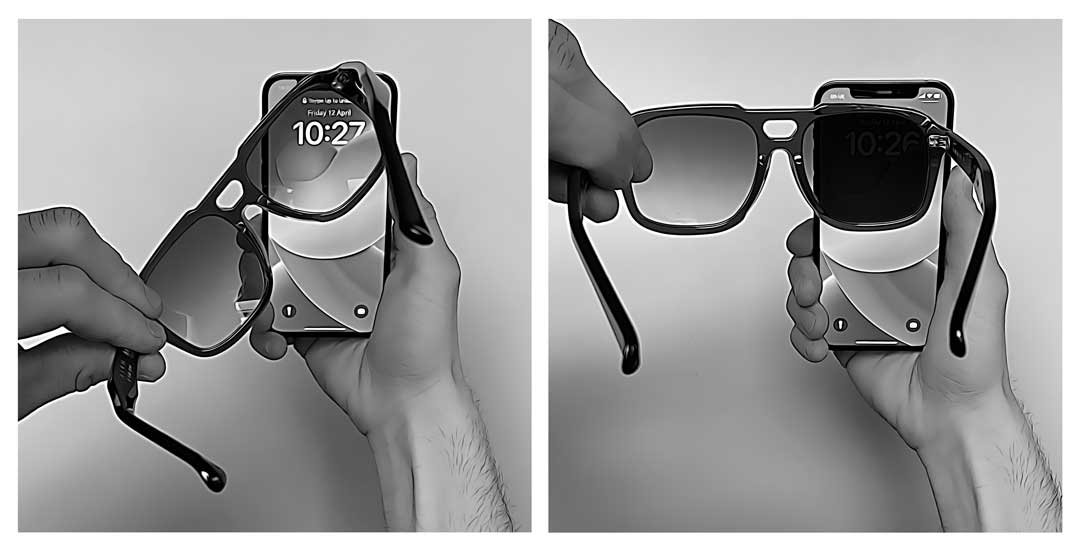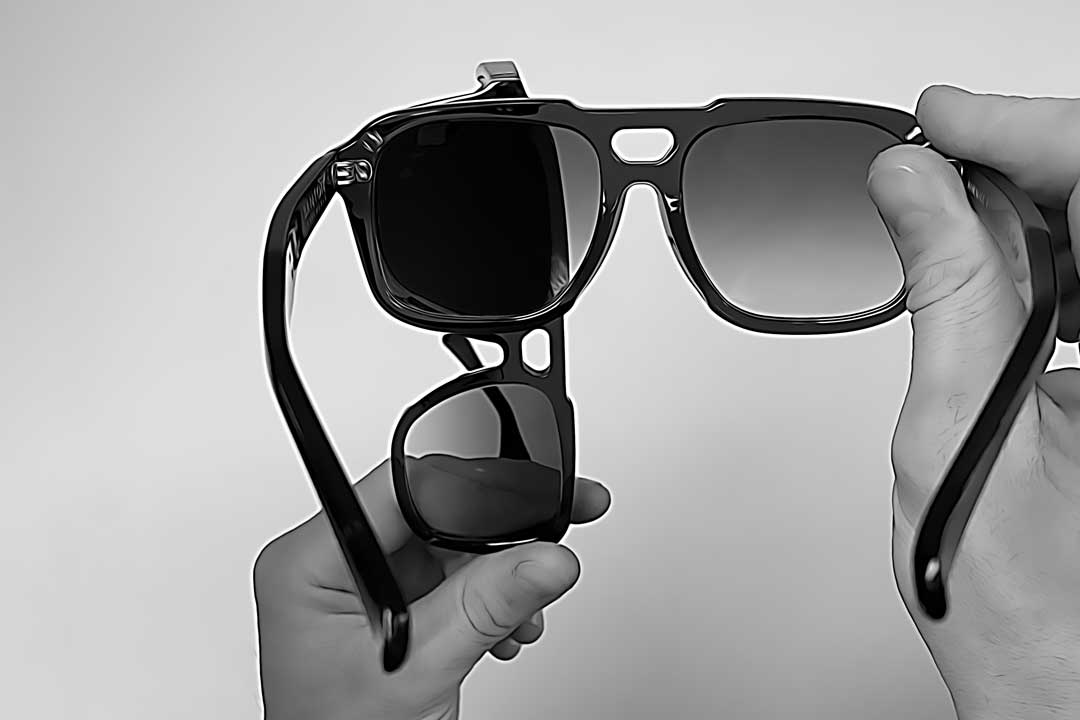Polarised sunglasses are like having a secret super power.
They drastically improve clarity, block glare, enhance your colour perception and even improve eye comfort.
They are quite similar to the regular sunglasses, so how do you know these sunglasses are actually polarised?
Over normal sunglasses, polarised glasses have the capability to give protection from sun as well as wet as glare from wet surfaces.
Testing these polarised sunglasses is really easy, whether you are in a shop, at home, & a remote area. So, save this article to know 2 simple tricks for checking whether sunglasses are polarised or not.
Let's dive in.
What are polarised sunglasses?
Polarised sunglasses contain a layer within each of the lenses called a polariser. This layer is a type of chemical film that blocks glare from flat reflective surfaces such as water, snow, or wet roads.
Like regular sunglasses, polarised sunglasses are a better way to block UV light. The polariser sunglasses within the lenses will help to reduce visual strain over long periods of sun exposure.
This is why they're considered a superior type of lens as they are less affected by strong reflected sunlight, while offering greater colour and depth perception.
To learn more about how polarised sunglasses work, check out this article.
Method 1: Polarised sunglasses test using a screen

One easy way to check whether you have polarised lenses is to hold them in front of a digital screen. This polarised sunglasses test is quick to do and can be conducted using any device that has an LCD screen. A smartphone or computer screen will work perfectly.
Follow these simple steps to determine whether you have a polarised pair of sunglasses:
-
Grab your mobile phone (any LCD screen device will work).
-
Hold your sunglasses at 90 degrees in front of the screen.
-
Look through the lens overlapping the screen while slowly rotating the frame so they're at the correct orientation.
-
Check whether there's a change in the brightness of the light.
-
If the screen darkens, after an angle (typically at 90 degrees), the lenses are polarised.
Method 2: Polarised sunglasses test with two frames

If you're in a shop looking to buy some new sunglasses, you can quickly check if the sunglasses are polarised by using two separate frames. This hack is super handy and saves you asking the sales assistant (who's always helping someone else).
-
Hold your test frame in your right hand and another in your left.
-
Position the sunglasses so they're face to face, with each of their lenses overlapping (like the image above).
-
Rotate the sunglasses behind your test frame to 90 degrees while keeping the test frame level.
-
Look through the shared lenses.
-
If the brightness is reduced, then both lenses are polarised, but if there are no changes, the test glasses have non-polarised lenses.
FAQs

Is it worth paying for polarised sunglasses?
Definitely, polarised sunglasses are worth buying. Buying polarised glasses will surely cost you more than non-polarized lenses, but its benefit justifies the cost.
Polarised lenses filter condensed sunlight much better than non-polarised lenses. This will give you better protection and comfort from the sunlight. Whether you are driving, playing outside, or tracking on ice, these are the best options, especially when you are outside for a long time.
If that's not enough to convince you of their value, then you need to know that they also filter UVA and UVB light, which vitally prevents damage to cornea and retina of your eyes.

What are the disadvantages of polarised glasses?
Like all things in life, there are both pros and cons associated with the use of these lenses. Polarised sunglasses' downsides include the following:
- Polarised sunglasses are typically more expensive(around 20%-30%) than non-polarised equivalents.
- Heavily darken LCD screens such as your phone, car displays, or digital road signs.
- Reduce visibility in low light conditions, which can be a disadvantage when driving at dawn, dusk, or in heavily shaded areas.
- Not good for certain sports such as skiing or motorbiking, as they can make it difficult to distinguish between ice patches and snow.
- Limited lens tint options (typically grey, brown, or green) which offer fewer options for customisation.
- May cause nausea as they alter your perception of depth and distance.
Are polarised sunglasses better for your eyes?
Polarised lenses do not offer more UV protection than non-polarised lenses, but they do offer greater visual comfort by blocking nearly all glare. This will help to reduce eye fatigue, prevent headaches, and squinting during prolonged exposure to bright light.
Furthermore, polarised shades improve contrast and optical clarity, which enhances your ability to see colours and details. These advantages add to your overall comfort and visual experience, which makes polarised sunglasses a popular option for people who spend a lot of time outside.

Are polarised sunglasses 100% UV resistant?
Not necessarily. Polarised sunglasses are not automatically 100% UV resistant.
Regardless of polarisation, if the sunglasses are rated as UV400, they are indeed 100% UV protective. The primary function of any sunglasses frame is its ability to block ultraviolet light, which any legitimate sun lenses should provide.
Polarisation is a secondary function of any sunglasses frame and is merely an upgrade to improve the visual experience by blocking the effects of glare. Whilst it might sound better that lenses are polarised, this isn't remotely as crucial as UV protection.
What's the best UV rating for sunglasses?
UV400 is the best possible rating for sunglasses. This means they can block 99 to 100% of your UVA and UVB rays. They also give you protection from reflective glare from the surface.
In compliance with European standard EN 1836:2005, UV400 (or UV40) means a sun lens can block electromagnetic light frequencies up to 400 nanometres.
How can I test my sunglasses for UV protection at home?
You can test your sunglasses for UV protection at home by using an inexpensive ultraviolet torch. In a darkened room, shine the torch at one of the lenses to see if any light gets through. If no light passes through, it means your lenses are indeed UV protective.
How can I tell if my sunglasses have UV protection?
The best way to do this is to check the label to see whether it has a UV rating. Enquire about UV protection when purchasing your sunglasses to ensure that they have the specifications you're looking for.
Can sunglasses be both UV and polarised?
Yes. By law, any sunglasses sold legitimately must be rated as UV40/UV400 and provide 99-100% protection against ultraviolet light. You can find out that most of the trusted brands offer both polarised and 100% UV protection. Sunglasses protect from the high brightness of the sun, whereas polarisation reduces glare from reflective surfaces (like water, roads, or glass).
Conclusion
Now, I think you don't need someone else to check the polarization of the lens. You can check it anywhere, anytime. By simply putting any sunglasses in front of the mobile screen and rotating them, you can check if the lenses are polarised if there's a significant change in darkness. Polarised lenses can block nearly all reflected glare from flat reflective surfaces such as water, snow, or wet roads. This will help to reduce visual fatigue by diminishing reflected sunlight. If you are buying glasses to get protection from the sun, you can either go with totally polarized glasses or buy sunglasses with a UV400 rating. Both are great options, but getting polarisation with sunglasses is preferable.
Did you enjoy this article? If so, please check out our other polarised sunglasses blog posts for more helpful advice.